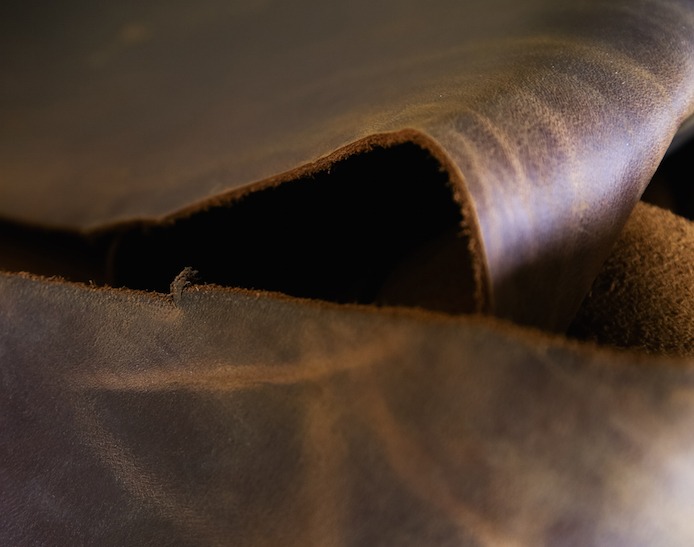No products in the cart.
Fact Check
What To Do When Leather Gets Wet
Contents
While leather is known for its toughness, one thing that can really ruin its appearance and longevity is soaking it in water.
While this isn’t a big deal for something cheap you don’t care about; its a disaster for an expensive leather wallet, bag or shoes.
What To Do When Leather Gets Wet:
For one, don’t panic.
Read this guide to find out how to save your leather goods from being ruined after they get wet.
What Kind of Leather is it?
This guide is divided into two parts depending on the type of leather:
Water Based leathers and Oil based leathers.
Water based leathers like vegetable tanned leather are easier to repair from water damage.
Oil based leathers like distressed leather are much harder to repair from water damage. Excessive water damage to distressed leather will most likely be unrepairable.
If you don't know if your leather product is water based or oil based, please ask the manufacturer.
Following the wrong instructions will bring you incorrect results.
Also, its probably best to temper your expectations a bit when trying to repair water damage to leather.
How to Fix Water Based Leathers (Vegetable Tanned)
Step 1: Dry It Off
The first step to saving your leather is to help it dry. Wipe any water you find off the surface and out from inside, then allow what’s soaked into the material to evaporate on its own.
Hang jackets up on a wide padded hanger, put hats on a rack that has sufficient air flow, and stuff bags and shoes with newspaper or other absorbent materials to help soak up moisture and retain the original shape.
For wallets, let it dry in the closed position. Its soft now but it will harden back up and you want it to be in the natural closed position when it dries.
The key isn’t to wait for it to dry completely, but to allow enough wetness to evaporate until the leather is just moist instead of soaked.
Don't Use a Blow Dryer
Whatever you do, DO NOT try to apply unnatural heat like a blow dryer.
All you’ll accomplish is ruining your leather faster by turning it into jerky.
Step 2: Condition
Once the leather has dried to the point where it’s only dampened, rub in a thick coat of a leather conditioner solution.
Our choice is Chamberlain’s Leather Milk, but whatever brand you prefer will do just fine. Make sure to use the correct solution for your leather.
Chamberlain's Leather Milk #1 will work great to condition vegetable tanned leather.
Leather conditioner solutions contain the natural oils real leather contains within itself, oils that being drenched in water inevitably wash away.
By replacing these oils, it restores the texture, durability, and health of your leather goods like they were brand new.
For best results, it’s a good idea to have a bottle of leather conditioner on hand.
Since you can’t exactly plan for when your leather goods might get soaked, the only way to avoid permanent damage or costly overnight shipping fees is by ordering a bottle and keeping it tucked away for emergencies before they happen.
Step 3: Protect For Later
DO: Use conditioner sparingly.
DON'T: Apply conditioner directly to the leather.
DO: Read the instructions on the back of the bottle.
Once the conditioner has fully soaked into the material, check for dry patches and apply more as needed.
Once the surface of the leather feels as it once did, buff the entire piece using a lint free cloth and a mixture of leather conditioner and a leather-safe cleaner (white vinegar works just fine) in a 2-to-1 ratio.
Once your leather feels completely smooth and any obvious surface damage has disappeared, your leather goods should be in perfect condition once more.
I recommend to break up the applying of conditioner over multiple days or at least multiple hours.
Treat this repair job like a heart surgeon, not a heavy duty mechanic.
How to Fix Oil Based Leathers from Water Damage
The distressed leather used to make JooJoobs' products is oil based.
Oil based leathers do not like water.
If you've had your wallet or belt for awhile and its already formed a patina, then your oil-based leather product already has a natural barrier against the water.
How wet is it?
If someone spills a glass of water at a restaurant and your wallet gets wet, quickly pick it up and dry it off. Most likely, this is not going to be a big deal.
If you fall in the lake while fishing and swim around for awhile, then we have a situation on hands and you can use this guide to try and repair the water damage.
Step 1: Dry It Off
The drying off process is completely different that water based leathers.
Oil based leathers must be completely dried.
This is the most important step: completely dry the leather.
No water can be present before moving to Step 2.
Don't stuff it. Don't stretch it. You could put some newspaper inside but only do so like it was money, adding a few thin layers of newspaper.
Rotate the leather product, allowing all sides to dry.
Don't Use a Blow Dryer
Let the leather dry in the sun or in a dry, room temperature area of your home. Don't use a blow dryer, don't try and speed up the process.
The drying stage could take days. The longer you leave it drying the better.
Step 2: Condition with Oils
Oil based leathers like oil. So to repair the leather (once 100% completely dry from water) you apply oil sparingly to the leather. A little bit at a time.
If you live in warmer climates, you can use coconut oil. In milder climates, you can use extra virgin olive oil. Add oil to a shammy cloth, and rub it into the leather, in small circles. Wax on, wax off.
Rub in a little bit each day. Less is more when trying to repair oil leather. We don't want a drowning, sloppy mess on our hands.


How to Waterproof Leather
While fixing your leather after it becomes wet is all well and good, the best way to protect your leather in the long term (aside from avoiding any source of moisture) is to stop it from being able to become wet in the first place.
DIY Waterproofing Leather
Here is an easy guide on how to waterproof leather with a homemade beeswax cream.
A word of caution, first and foremost. Real leather is naturally porous and cannot be 100% waterproofed. It’s more accurate to call this a method for making water resistant leather.
Additionally, spot test any kind of protecting solution you place on your leather, as it can cause a darkening effect in certain cases.


Gather and Combine Ingredients
To make the cream itself, all you’ll need is a cup of extra virgin olive oil and two ounces worth of real beeswax. Simply add the oil to a sturdy glass jar or other heat-safe container before breaking up your beeswax and tossing it inside.
Heat the Mixture
After combining your ingredients, place the container into a pan of water and gradually heat on low until the beeswax starts to melt, stirring constantly once this happens. You should continue to stir until all the beeswax has melted into the olive oil.
Cool the Mixture
Remove the pan from the heat and carefully take the container from the water. As it cools, continue to stir to keep the two materials from separating. After nearly half an hour of stirring, you should be left with a solid, creamy substance.
Apply to the Leather
Once the cream has cooled completely, begin applying it to the leather. Ensure that the leather is thoroughly cleaned, then spot check somewhere people won’t notice.
If the test spot doesn’t significantly darken or the leather’s color isn’t ruined, spread some of the cream onto other areas of the leather, buffing as you go until it has been thoroughly rubbed in. Repeat this process several times to build up a solid coating of the beeswax cream.
Safe Leather, Happy Leather
Protecting your leather from harm is a smart investment for anyone who enjoys its style or sturdiness.
With these simple step by step instructions, you’ll know how to not only fix your leather goods after they become soaked in water but prevent that from happening again in the future.
Whether you’re down on the ranch or living in the city, your leather will be protected for years to come.


